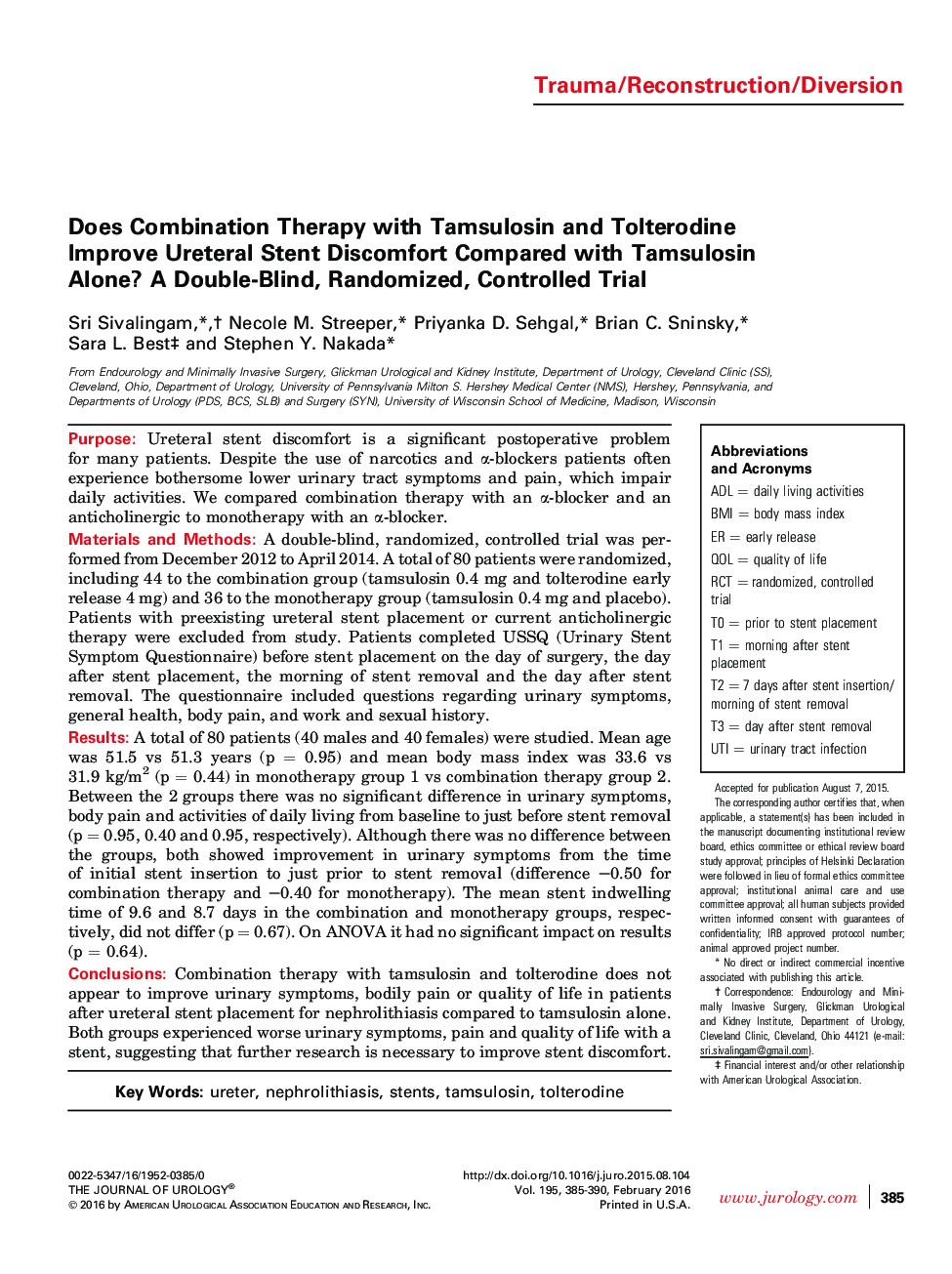| Article ID | Journal | Published Year | Pages | File Type |
|---|---|---|---|---|
| 3858346 | The Journal of Urology | 2016 | 6 Pages |
PurposeUreteral stent discomfort is a significant postoperative problem for many patients. Despite the use of narcotics and α-blockers patients often experience bothersome lower urinary tract symptoms and pain, which impair daily activities. We compared combination therapy with an α-blocker and an anticholinergic to monotherapy with an α-blocker.Materials and MethodsA double-blind, randomized, controlled trial was performed from December 2012 to April 2014. A total of 80 patients were randomized, including 44 to the combination group (tamsulosin 0.4 mg and tolterodine early release 4 mg) and 36 to the monotherapy group (tamsulosin 0.4 mg and placebo). Patients with preexisting ureteral stent placement or current anticholinergic therapy were excluded from study. Patients completed USSQ (Urinary Stent Symptom Questionnaire) before stent placement on the day of surgery, the day after stent placement, the morning of stent removal and the day after stent removal. The questionnaire included questions regarding urinary symptoms, general health, body pain, and work and sexual history.ResultsA total of 80 patients (40 males and 40 females) were studied. Mean age was 51.5 vs 51.3 years (p = 0.95) and mean body mass index was 33.6 vs 31.9 kg/m2 (p = 0.44) in monotherapy group 1 vs combination therapy group 2. Between the 2 groups there was no significant difference in urinary symptoms, body pain and activities of daily living from baseline to just before stent removal (p = 0.95, 0.40 and 0.95, respectively). Although there was no difference between the groups, both showed improvement in urinary symptoms from the time of initial stent insertion to just prior to stent removal (difference –0.50 for combination therapy and –0.40 for monotherapy). The mean stent indwelling time of 9.6 and 8.7 days in the combination and monotherapy groups, respectively, did not differ (p = 0.67). On ANOVA it had no significant impact on results (p = 0.64).ConclusionsCombination therapy with tamsulosin and tolterodine does not appear to improve urinary symptoms, bodily pain or quality of life in patients after ureteral stent placement for nephrolithiasis compared to tamsulosin alone. Both groups experienced worse urinary symptoms, pain and quality of life with a stent, suggesting that further research is necessary to improve stent discomfort.
